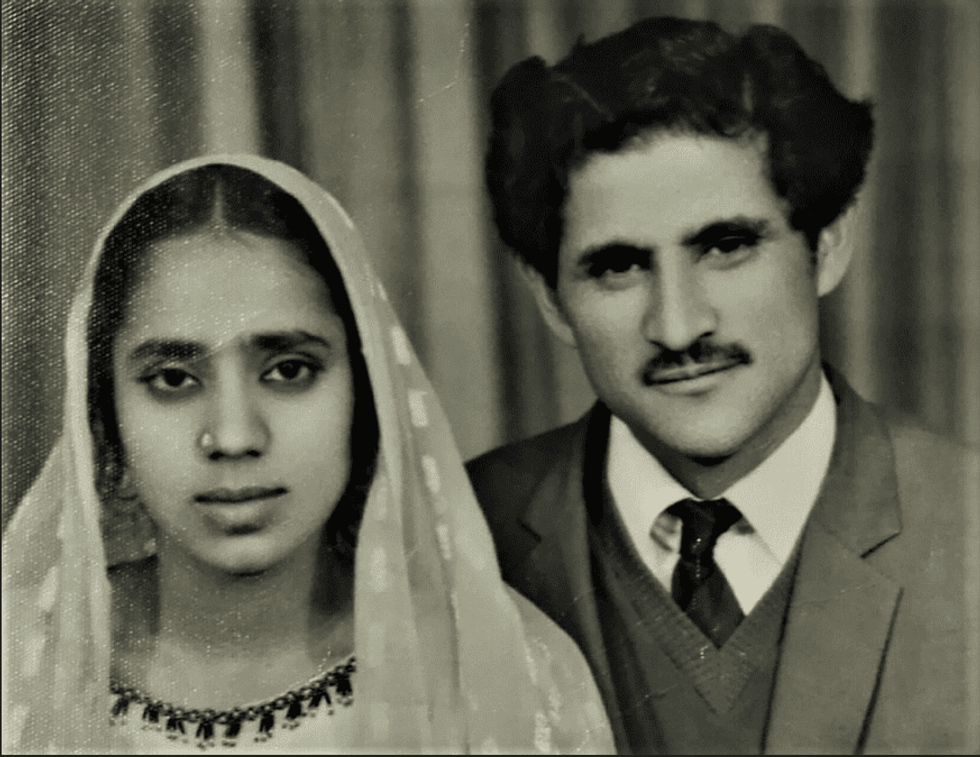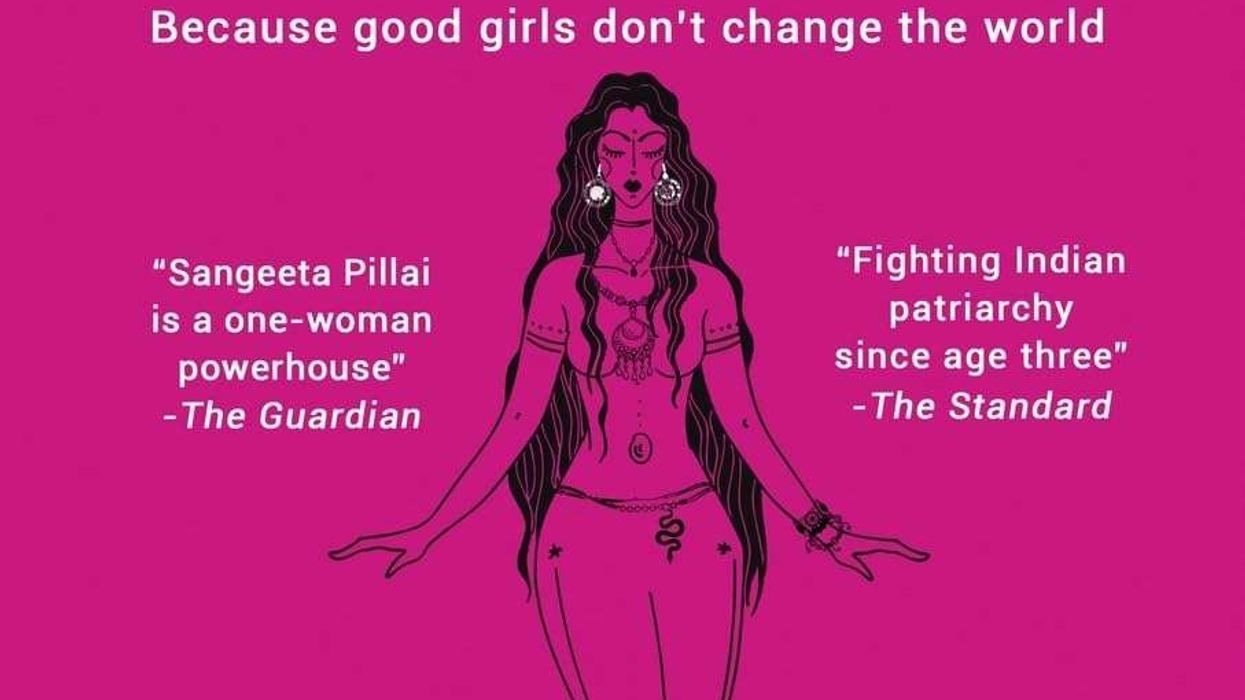Author Vaseem Khan has told Eastern Eye of his ambition to attract a more
diverse membership as he agreed to take on the chairmanship of the Crime Writers’ Association (CWA).
As the first non-white person occupying the top post of the 70-year-old organisation, Vaseem spoke of his hope that taking the chair would send a positive message to British Asians.
Vaseem, who was born in London in 1973 of Mohammed and Naweeda Khan, who emigrated to the UK from Pakistan 50 years ago, has had remarkable success as a crime writer since his debut novel, The Unexpected Inheritance of Inspector Chopra, came out in 2015.
His ninth novel, Death of a Lesser God, is about to be released. The CWA was founded in 1953 by John Creasey, with the aim of supporting “writers of every kind of crime fiction and non-fiction”.
Vaseem will take over from the outgoing CWA chair, Maxim Jakubowski, who will formally hand over the “Creasey Bell” at the annual Dagger Awards in London on July 6.
Vaseem recognised that the CWA, the largest institution of crime writers in Europe, “is steeped in tradition”. He said, “The industry is still incredibly white. However, over the last decade, I have seen many people within the industry making great effort to try to open the door and be more welcoming to new voices (and) authors from different backgrounds.
“I think crime fiction has led the way in that. And, so ultimately, I decided to take on the role because I think symbols are also important.
“When people see someone like me, following in the footsteps of authors like Ian Rankin and Peter James – very famous writers who have chaired the CWA – and they look at my record and say, ‘Well, you know, he’s published nine books with a big publisher, he’s won awards, and now he’s chair of the CWA; well, if he can do it, we can also do it.’”
Vaseem revealed the second reason he took on the post “was to try and help the CWA negotiate change, because change for any organisation that is as old and as traditional as the CWA is not easy”.
He added: “Having been a management consultant for 10 years and going into organisations and helping them manage change, I felt I had the skill set to help them.”

Arriving in Mumbai in 1997 at the age of 23, Vaseem stayed in India until 2006, working as a management consultant to Kamat, a hotel group specialising in ecotourism. He met and later married a colleague, Nirupama Badhwar, who ran a niche travel agency linked to a hotel Vaseem was advising.
On landing in Mumbai and taking a taxi into town, Vaseem was taken aback to find an elephant walking along the main highway. The image made such an impression that he introduced a baby elephant called Ganesh as a side kick to his main character, a retired police inspector called Ashwin Chopra. Vaseem named the honest cop after his brother-in-law (“with his permission”).
Another entertaining character is Chopra’s wife, Archana. Known to all as “Poppy”, she defends her husband against all comers and thinks “he is right even when he is wrong”.
Vaseem laughed: “Poppy is based largely on my own wife, who’s a very enthusiastic and exuberant character and cares a lot about social issues.”
Mumbai was an exhilarating experience for Vaseem. “I met people from all over the country, all backgrounds, all types; they were incredibly friendly, incredibly welcoming, very, very effusive and warm. This was a time when I myself made that journey into becoming a more
mature person.”
Vaseem remembered his parents. “My mother was born in 1947 in Pakistan. My father was born on the Indian side of the Punjab border and moved across (into the newly created Pakistan) in 1947. And then he grew up there. When he heard I was going to India he was quite nostalgic about it. He was really, really happy that I could go and see where he was actually born. He had this feeling that one day we might go back to India (for a visit), but he never got the chance. Both my parents passed away in the last seven years.
” Having had rejection slips from publishers in the previous two decades of his life, The Unexpected Inheritance of Inspector Chopra was so successful that it was translated into 17 languages. His publisher, Mulholland Books, part of the Hodder group, offered him a four-book deal, later extended to six.
Four more books followed in the Baby Ganesh series. The Perplexing Theft of the Jewel in the Crown involves the theft of the Koh-i-noor diamond after it is brought to India from the Tower of London for an exhibition.
Then came The Strange Disappearance of a Bollywood Star, Murder at the Grand Raj Palace, and Bad Day at the Vulture Club. Vaseem is also author of the Malabar House series.
The first, Midnight at Malabar House, which won him the CWA’s “Historical Dagger” prize, was followed by The Dying Day and The Lost Man of Bombay.
The fourth, Death of a Lesser God, about to be released, is set in 1950’s Bombay. According to the plot, Englishman James Whitby is due to hang for the murder of an Indian lawyer. As Persis Wadia, India’s first female police detective, and Archie Blackfinch, a forensic scientist from England, investigate, they are led to a second murder – that of an American soldier in the old colonial capital of Calcutta.
“Death of a Lesser God is looking at the Brits who stayed on in India after independence because we’ve never really examined them very much,” said Vaseem. “We have a Brit who was born in India, raised in India, practically an Indian in that sense, who has been convicted of murdering an Indian nationalist lawyer. He has 11 days left before they hang him. But he claims he’s innocent. He claims a form of reverse racism is at work here where India is punishing him for the sins of the Raj.”
Vaseem’s style of writing in the Malabar House series has been compared with that of the “Queen of Crime”. In fact, he will be chairing a panel – discussing why Agatha Christie remains “the biggest selling writer in English language since Shakespeare” – at the Jaipur Literary Festival at the British Library on Saturday (10).
He says the Bollywood director Vishal Bharadwaj is adapting Christie’s The Sittaford Mystery for Indian television, but transposed to “the snow-capped mountains of Himachal Pradesh” with a woman investigator called Charlie Chopra.
Vaseem said: “I write in that golden age style. The sex and the blood and gore and the swearing are all offstage. It’s about the intellectual challenge. It’s about the mystery. It’s about creating characters, and evoking the sensibility of that era.”
He has lightened his load, but not given up his day job in the department of security and crime science at University College London. Vaseem disclosed: “We recently conducted a workshop with law enforcement agencies and the government looking at autonomous vehicles. I mean 20-30 years from now, we’ll all be riding around in driverless vehicles. But nobody’s looking at the crime aspects of these new technologies












